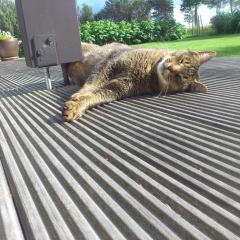Identification of jewel setting
-
Recently Browsing
- No registered users viewing this page.
-
Topics
-
Posts
-
I also agree with @mikepilk and @Waggy. Your readings look good. The amplitude drop between the horizontal postion and the vertical position is nice and low (only 18° difference). The delta of 17 sec (-3 to +14) between those positions is absolutely ok. If you really wanted to improve on this, I think you'd have to look into the poising of the balance wheel (not the spring, which looks perfect). But that's a total overkill for this kind of movement. Leave it be.
-
I've just finished refurbishing a Memostar Alarm with AS 1931 movement (same as 1945 but with date and running at 21600). I was also surprised how many parts are available at Cousins. Like you, I was missing the alarm stem (Cousins stock them) and I needed new crowns. It's a nice simple movement for an alarm, easier to service than a Seiko Bell-Matic. BTW I made a note in my Servicing spreadsheet: "Pull out winding stem before removal". It may have just been wear on my movement, but I found that the yoke could move out of the clutch if the stem was removed in the normal position (like some ETAs). You might find this interesting
-
By LittleWatchShop · Posted
I picked up this alarm watch at a flea market several months ago and recently decided to investigate. I am not finished, but well on my way. As you can see, there was significant water damage. Running these parts through my L&R cleaner was not enough to clean them, so I did manual cleaning with one-dip and cotton swab (the dense pointed kind). The wig-wag was stubborn--the two gears would not release from the plate. I soaked it in Kroil overnight and that did the trick. There was some rust on the balance staff, but not actually on the pivots themselves. Nevertheless, I chucked it a step-chuck on my lathe and burnished the pivots. The watch is running and I have confirmed that the alarm drive train is functioning. Since I am missing a stem for the alarm, I have not done the final assemble of the alarm components. Surprisingly, there are lots of parts available for this movement on Cousins. I will probably get a couple of stems and maybe some other parts that I deem necessary. The watch is running at weak amplitude (about 190) and shows some poising issues. I will work on that. The last two pictures are after partial reassembly. -
Exactly! It may not really be a joke, but the actual truth.
-





.thumb.jpg.cb17a66989f1e796fd4217db2e9ca9df.jpg)

Recommended Posts
Join the conversation
You can post now and register later. If you have an account, sign in now to post with your account.
Note: Your post will require moderator approval before it will be visible.